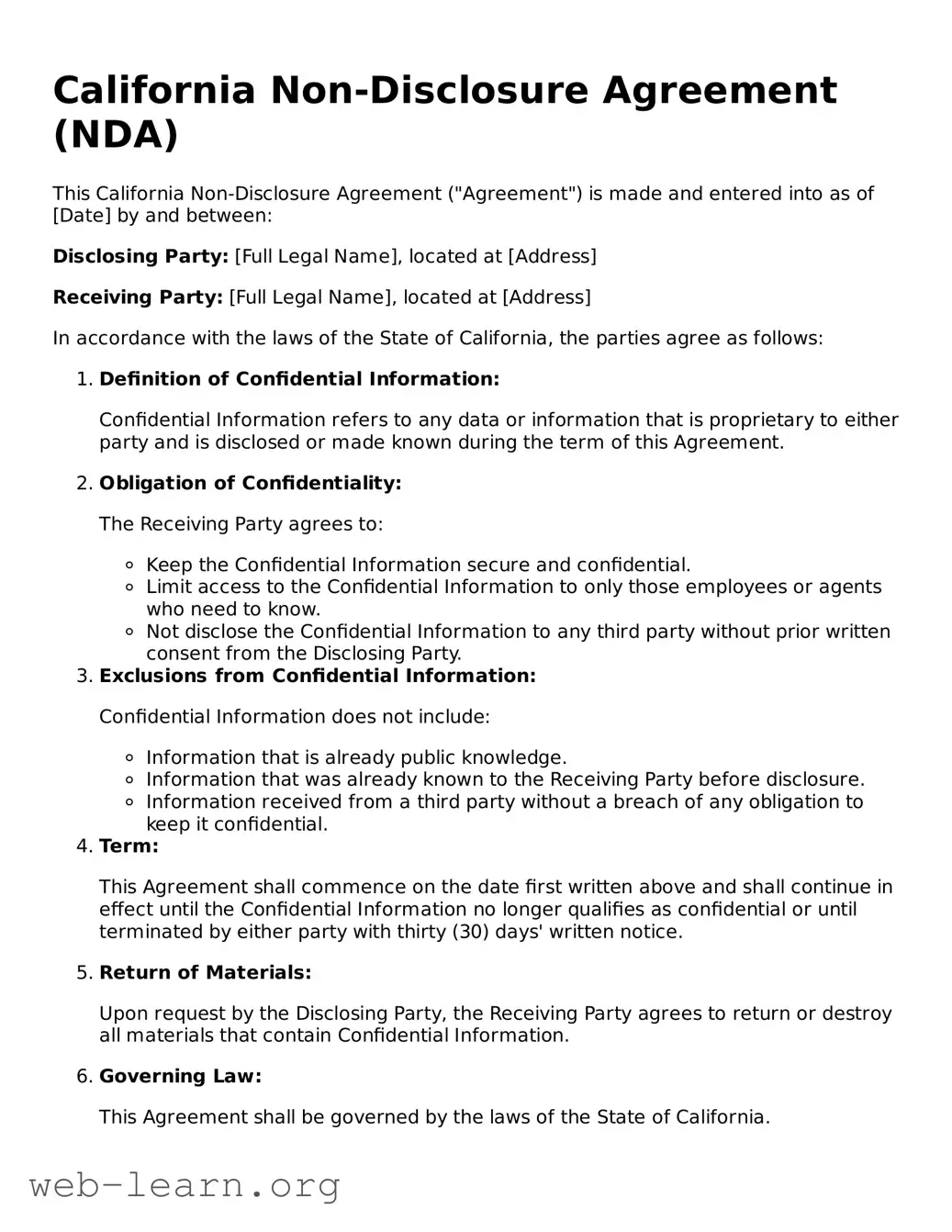California Non-Disclosure Agreement (NDA)
This California Non-Disclosure Agreement ("Agreement") is made and entered into as of [Date] by and between:
Disclosing Party: [Full Legal Name], located at [Address]
Receiving Party: [Full Legal Name], located at [Address]
In accordance with the laws of the State of California, the parties agree as follows:
- Definition of Confidential Information:
Confidential Information refers to any data or information that is proprietary to either party and is disclosed or made known during the term of this Agreement.
- Obligation of Confidentiality:
The Receiving Party agrees to:
- Keep the Confidential Information secure and confidential.
- Limit access to the Confidential Information to only those employees or agents who need to know.
- Not disclose the Confidential Information to any third party without prior written consent from the Disclosing Party.
- Exclusions from Confidential Information:
Confidential Information does not include:
- Information that is already public knowledge.
- Information that was already known to the Receiving Party before disclosure.
- Information received from a third party without a breach of any obligation to keep it confidential.
- Term:
This Agreement shall commence on the date first written above and shall continue in effect until the Confidential Information no longer qualifies as confidential or until terminated by either party with thirty (30) days' written notice.
- Return of Materials:
Upon request by the Disclosing Party, the Receiving Party agrees to return or destroy all materials that contain Confidential Information.
- Governing Law:
This Agreement shall be governed by the laws of the State of California.
IN WITNESS WHEREOF, the parties hereto have executed this Agreement as of the date first above written.
Disclosing Party Signature: _______________________ Date: _______________
Receiving Party Signature: ______________________ Date: _______________
